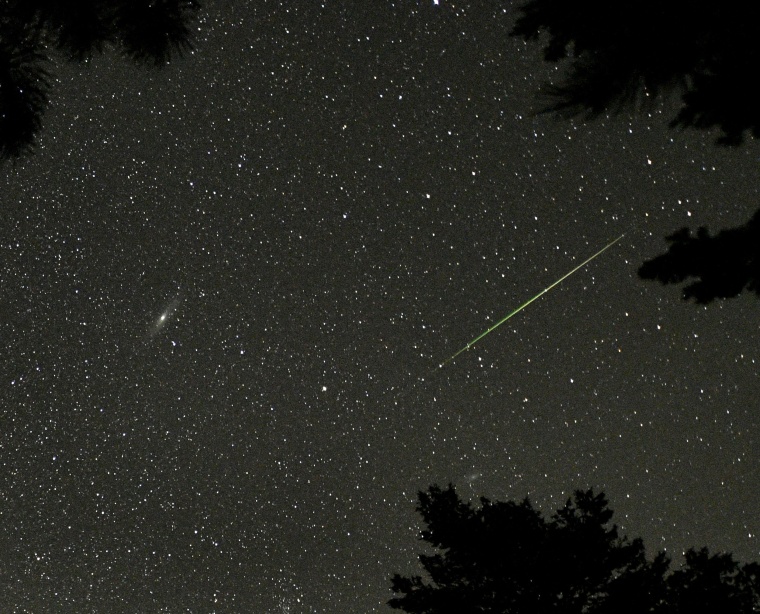The bright Perseids are perhaps the most popular meteor shower of the year. But if the last-quarter moon that will appear during the shower this year is especially bright, they'll be washed out.
Spectators can expect to see the greatest number of meteors during the shower's peak on the morning of August 12, according to NASA. Years without moonlight see higher rates of meteors per hour, and in outburst years, such as in 2016, the rate can be between 150-200 meteors an hour.
Last year, a bright, full moon made things a little bit tricky for skywatchers looking to get a glimpse of the Perseids. So, while "the Perseids are rich in bright meteors," NASA meteor expert Bill Cooke told Space.com last year, "the moonlight is going to spoil most of the show.
This year, the moon won't get in the way quite as much, but its bright glow could impact your ability to clearly spot the Perseids.
To best see the Perseids, go to the darkest possible location and lean back to observe as much sky as possible directly above you.
The best time to look for meteors is in the pre-dawn hours. While the meteors will peak in the morning on Aug. 12, they will also be very visible on Aug. 11 and 13. Even outside of this peak timeframe, you should be able to spot a few meteors between midnight and dawn any morning the week before or after this date, according to NASA. TO see the meteors, look up and to the north. Those in southern latitudes can look toward the northeast to see more meteors.
Skywatchers looking out for the Perseids might also see some stray meteors from the Delta Aquariid meteor shower
When to see them?
Earth will pass through the path of Comet Swift-Tuttle from July 17 to Aug. 24, with the shower's peak — when Earth passes through the densest, dustiest area — occurring on the morning of Aug. 12. That means you'll see the most meteors in the shortest amount of time near that peak, but you can still catch some action from the famed meteor shower before or after that point.
You can see the Perseid meteor shower best in the Northern Hemisphere and down to the mid-southern latitudes, and all you need to catch the show is darkness, somewhere comfortable to sit and a bit of patience.
What causes the Perseids?
Comet Swift-Tuttle is the largest object known to repeatedly pass by Earth; its nucleus is about 16 miles (26 kilometers) wide. It last passed nearby Earth during its orbit around the sun in 1992, and the next time will be in 2126. But it won't be forgotten in the meantime, because Earth passes through the dust and debris it leaves behind every year, creating the annual Perseid meteor shower.
When you sit back to watch a meteor shower, you're actually seeing the pieces of comet debris heat up as they enter the atmosphere and burn up in a bright burst of light, streaking a vivid path across the sky as they travel at 37 miles (59 km) per second.
When they're in space, the pieces of debris are called "meteoroids," but when they reach Earth's atmosphere, they're designated as "meteors." If a piece makes it all the way down to Earth without burning up, it graduates to "meteorite." Most of the meteors in the Perseids are much too small for that; they're about the size of a grain of sand.
What do you need to see them?
The key to seeing a meteor shower is "to take in as much sky as possible," Cooke said. Go to a dark area, in the suburbs or countryside, and prepare to sit outside for a few hours. It takes about 30 minutes for your eyes to adjust to the dark, and the longer you wait outside, the more you'll see. A rate of 60-70 meteors per hour, for instance, means around one meteor per minute, including faint streaks along with bright, fireball-generating ones.
Some skywatchers plan to camp out to see the Perseid meteor shower, but at the very least, viewers should bring something comfortable to sit on, some snacks and some bug spray. Then, just relax and look upward for the celestial show.

